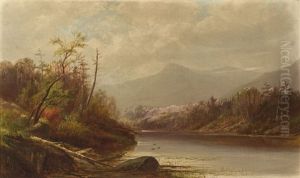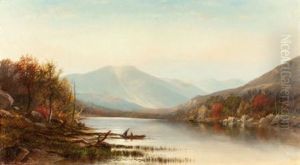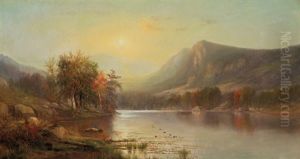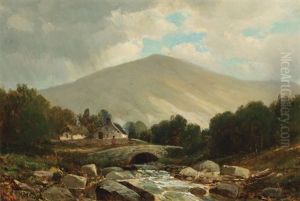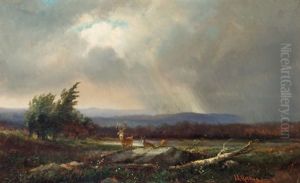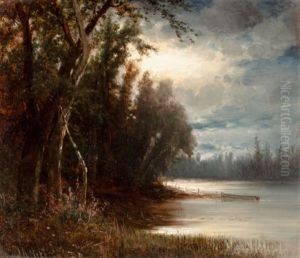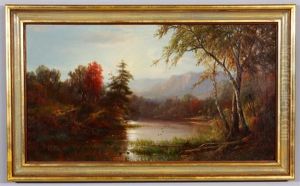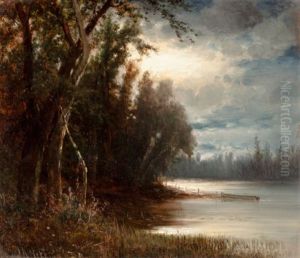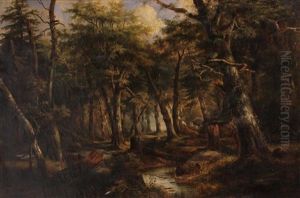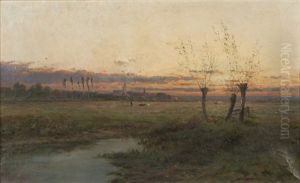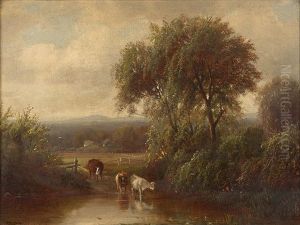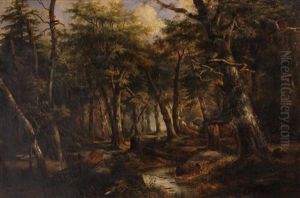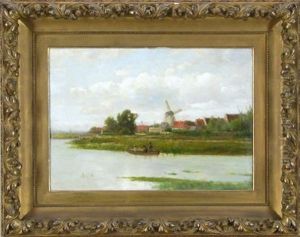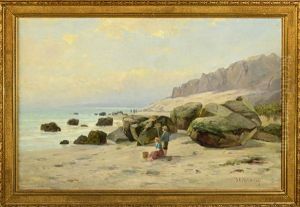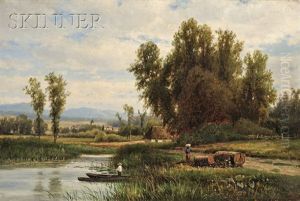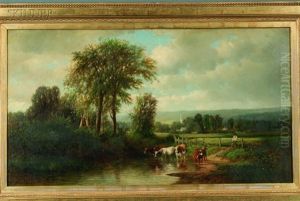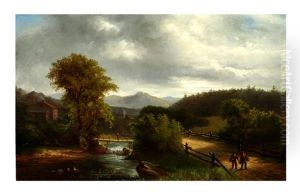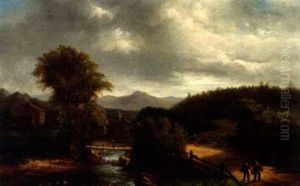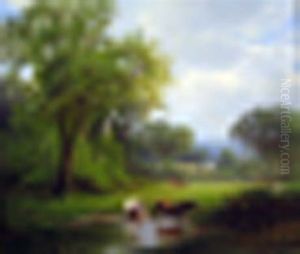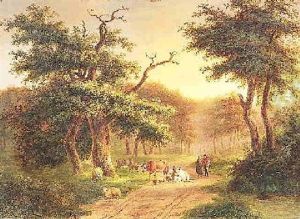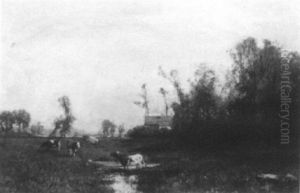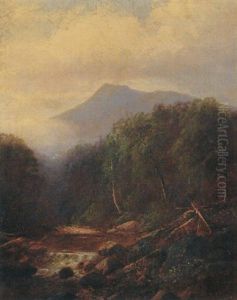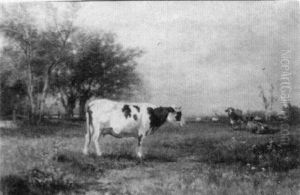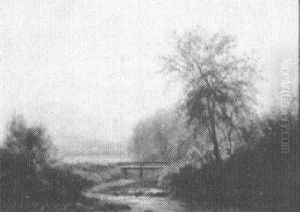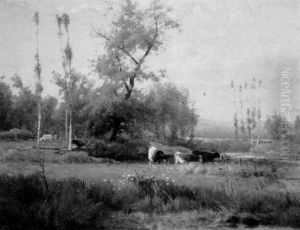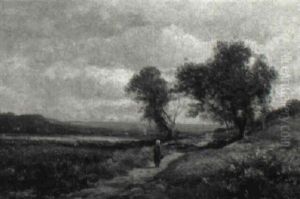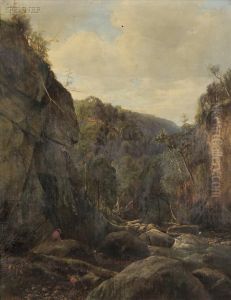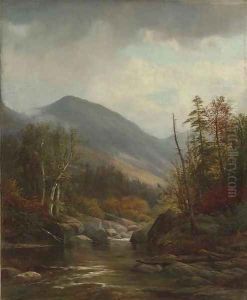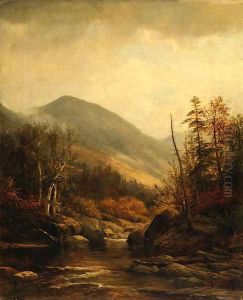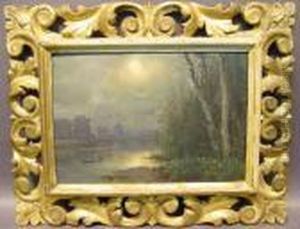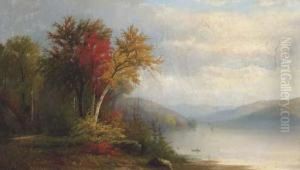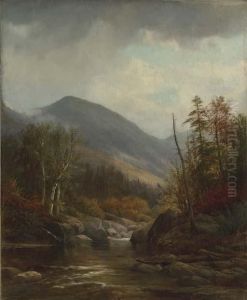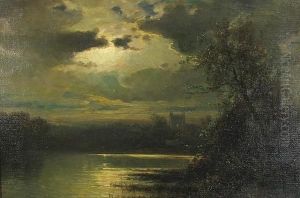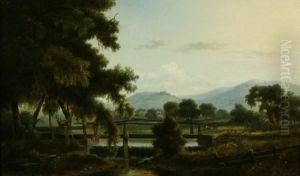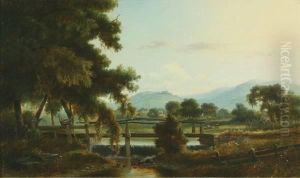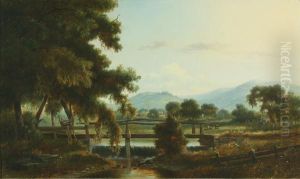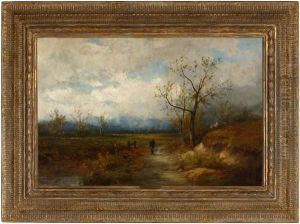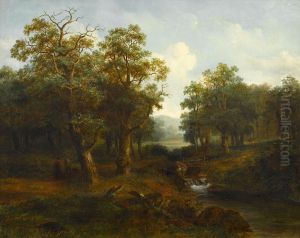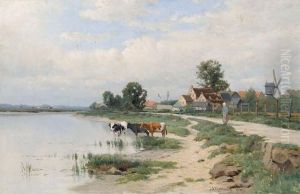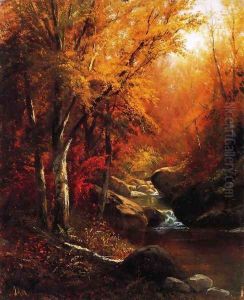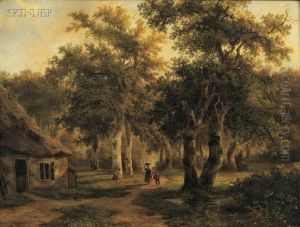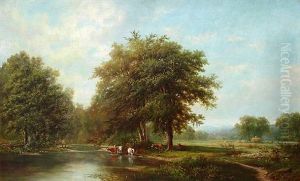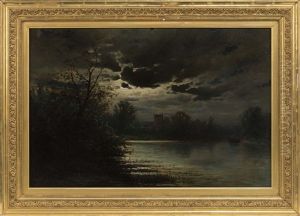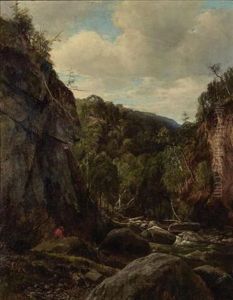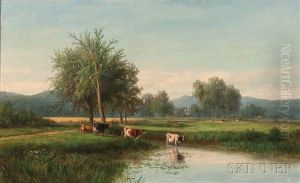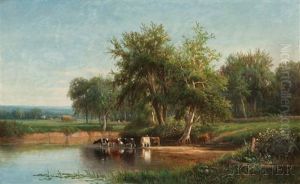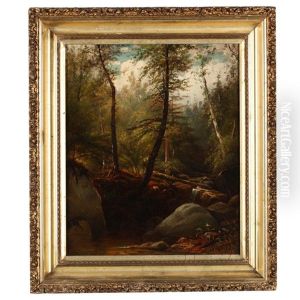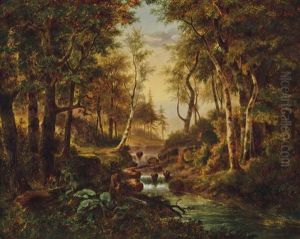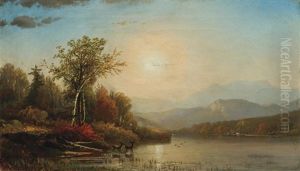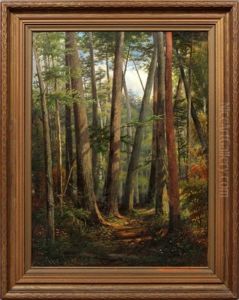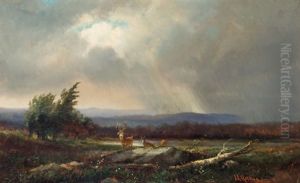Joseph Antonio Hekking Paintings
Joseph Antonio Hekking was a notable American landscape painter, born in 1830 in the Netherlands. Hekking was part of the second generation of the Hudson River School, a mid-19th century American art movement embodied by a group of landscape painters who were influenced by romanticism. His works are particularly known for their detailed and dramatic representation of nature, emphasizing the beauty and grandeur of the American wilderness.
Hekking's early life in Europe provided him with a classical foundation in the arts, but it was his immigration to the United States that truly shaped his career and style. After moving to the U.S., he settled in the New York area, where he became deeply influenced by the natural scenery, especially by the landscapes of the Hudson Valley and the Adirondack Mountains. These regions became the primary subjects of his paintings, capturing the essence of the American landscape with a unique blend of realism and romanticism.
Throughout his career, Hekking was an active participant in the American art scene. He exhibited his works at various important venues, including the National Academy of Design, where he gained recognition and respect among his peers. Hekking's paintings were celebrated for their vibrant colors, meticulous attention to detail, and the ability to evoke emotion and contemplation about the natural world.
Despite his success, Hekking struggled with the changing tastes in art. As the 19th century came to a close, the popularity of landscape painting waned, overshadowed by the emerging modernist movements. Nevertheless, Hekking continued to work in his preferred style, remaining true to his vision until his death in 1903.
Today, Joseph Antonio Hekking's legacy lives on through his contributions to the American landscape painting tradition. His works are held in various art collections and museums, appreciated for their artistic merit and historical significance. Hekking's dedication to capturing the American wilderness has left a lasting impression on the genre, making him a significant figure in the history of American art.
